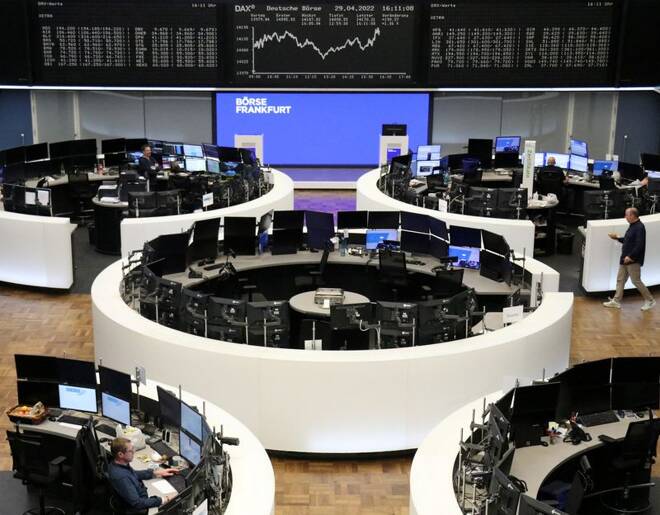Advertisement
Advertisement
Citi behind trade that caused brief European share plunge -sources, Citi
By:
By Stine Jacobsen and Nikolaj Skydsgaard
By Sinead Cruise
LONDON (Reuters) -The sudden fall in European shares driven by a brief crash in Nordic markets was caused by a single sell order trade by Citigroup Inc, people familiar with the matter told Reuters, and confirmed by Citi.
The flash-crash, which caused European shares to suddenly fall on a day of holiday-thinned trading activity, involved an erroneous calculation relating to a Nasdaq Inc index involving Swedish companies, one source said.
The Stockholm OMX 30 equity benchmark index was one of the hardest hit, falling by 8% at one point following a five-minute dive, before paring most of its losses to trade down 1.7% at 1229 GMT.
“This morning one of our traders made an error when inputting a transaction,” Citigroup said in a statement late on Monday. “Within minutes, we identified the error and corrected it.”
Nasdaq earlier said a single sell-side order was behind the sharp drop.
“The reason for the drop was a sell event by a market participant. We have not identified any disturbances in Nasdaq´s systems,” a Nasdaq spokesperson in Stockholm said in an emailed statement shortly before market close.
“Furthermore, after a review, Nasdaq has not seen any reason to cancel trades that were made during this event,” she said.
Brokers described the event as a “flash crash” due to an erroneous trade on a day of light activity.
Sweden’s financial supervisory authority said earlier it was investigating the unexplained plunge and was in contact with U.S. operator Nasdaq, which runs Stockholm and other stock markets in the Nordics region. Nasdaq was quick to rule out an error in its systems.
Other indices also sank, including those in Denmark, Norway, Germany, Italy and France, but later recovered.
The outsized move extended the pan-European STOXX 600 equity benchmark’s fall by more than 2 percentage points in the space of about two minutes from around 0758 GMT, although the closure of London markets made for holiday-reduced volumes.
A gauge of euro zone stocks’ volatility also saw a sudden spike to its highest since mid-March, at 35.99.
“It was weird in those minutes there,” Jyske Bank equity sales vice president Martin Munk said shortly after the dip, adding that many worried clients had called to ask what was happening.
Munk said it appeared like an erroneous trade or a technical glitch, because there was no news that could have triggered the move.
Brokers Nordnet earlier in the day talked of a “flash crash” that caused a brief market panic, while traders in Frankfurt and London said it might have been caused by algorithm-based trades going haywire or by a big “fat finger” trade.
The move came just ahead of an expected interest rate hike by the U.S. Federal Reserve this week amid worries that too aggressive policy tightening could slow down the world economy already struggling with high inflation.
Nasdaq said it continuously investigates price movements on its marketplace and was in a dialogue with market participants over Monday’s volatility.
“We currently see nothing to indicate errors in Nasdaq’s own systems,” a spokesperson for the exchange said in en e-mail early in the day.
(Reporting by John McCrank in New York; Sinead Cruise and Sruthi Shankar in London; Stine Jacobsen and Nikolaj Skydsgaard in Copenhagen; Anna Ringstrom, Helena Soderpalm and Johan Alnader in Stockholm; Terje Solsvik in Oslo, Danilo Masoni in Milan, and Hakan Ersen in Frankfurt; additional reporting by David Henry in New York editing by Gwladys Fouche and Tomasz Janowski)
About the Author
Reuterscontributor
Reuters, the news and media division of Thomson Reuters, is the world’s largest international multimedia news provider reaching more than one billion people every day. Reuters provides trusted business, financial, national, and international news to professionals via Thomson Reuters desktops, the world's media organizations, and directly to consumers at Reuters.com and via Reuters TV. Learn more about Thomson Reuters products:
Advertisement
